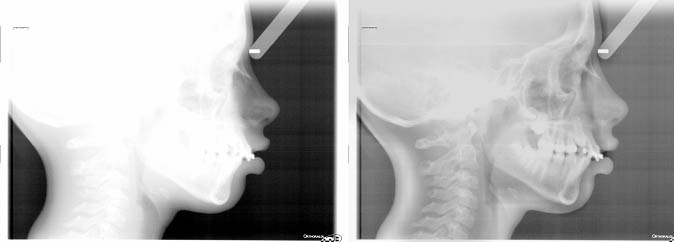
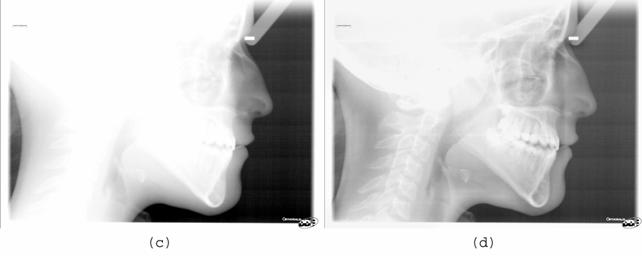
Soft-Tissue Filtering. Aim of this filter is to make both soft and bone tissue clearly visible in digital cephalic radiographies under a wide range of exposures. It uses a mixture model made up of two Gaussian distributions and one inverted lognormal distribution to analyze the image histogram. The image is clustered in three parts: background, soft tissue, and bone using this model. Improvement in the visibility of both structures is achieved through a local transformation based on gamma correction, stretching, and saturation, which is applied using different parameters for bone and soft tissue pixels. A processing time of 1 s for 5 Mpixel images allows the filter to operate in real time. Although the default value of the filter parameters is adequate for most images, real-time operation allows adjustment to recover under- and overexposed images or to obtain the best quality subjectively. The method has been patented both in Europe and in the USA and it has been published on IEEE Trans. on Med. Imaging.
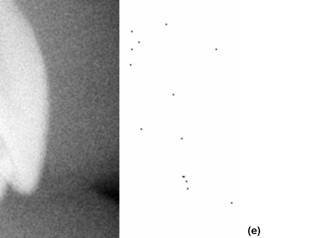
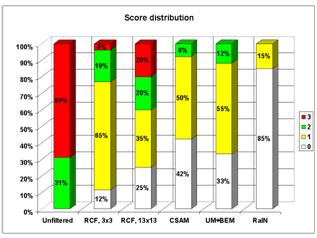
Impulsive noise removal. It is based on the hypothesis that the major contribution to image noise is given by the photon counting process (Poisson distributed), with some pixels corrupted by impulsive noise. This statistics is captured by an adequate mixture model. A switching median filter is driven by the estimated mixture. The filter is also able to reliably estimate the sensor gain. Its operation has been verified on both synthetic and real images; the experimental results demonstrate the superiority of the proposed approach in comparison with more traditional methods. The method is in press on IEEE Trans. on Medical Imaging.

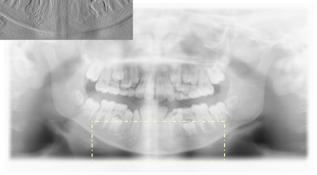

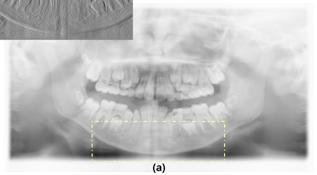
In the upper panels, the original panoramic images, and in the bottom panels the treated ones.
Compression and smart coding of offset and gain maps for intraoral digital x-ray sensors. A novel method to compress and store gain and offset maps has been developed. It is based on quad tree decomposition, which performs an adaptive sampling of the maps, matched with a RBF-based interpolation strategy. Qualitative and quantitative results show that the method achieves a higher compression rate and produces images of superior quality. (Med. Phys., 36(2), February 2009, pp. 464-479).
Imaging. A USA and a European patent on the methodology.